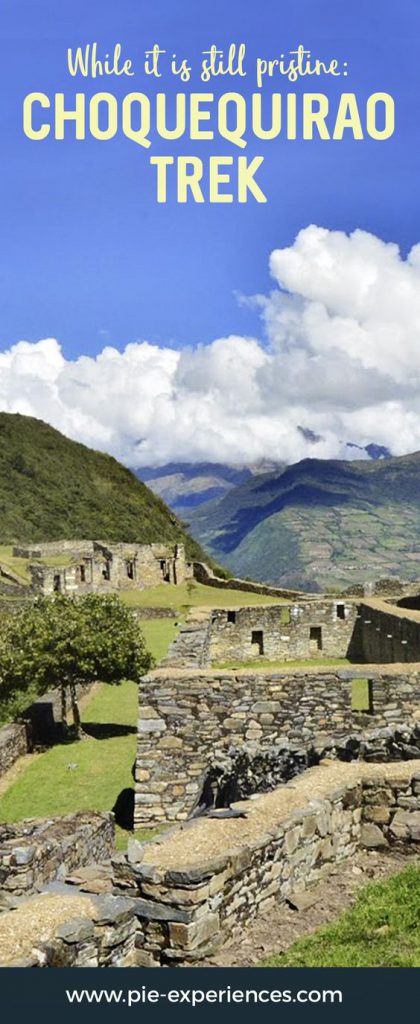Introduction to a Choquequirao Trek
There is another way to travel.
It involves throwing the guidebook away.
Listen to what every tourist is saying, and then ignore it.
You see, the professional tourists that regurgitate the guidebooks find a place they like, write about it in said guidebook, sell millions of copies, and the people who read the guidebooks go to the places that the professional tourists write about.
So far, so straight forward.
But, of course, this upsurge in tourism fundamentally alters the nature of the location.
Naturally, one example would be Machu Picchu.
And conversely I am also thinking about the little-known ‘sister’ of Machu Picchu; another Inca citadel high up in the mountains, and the journey to get there: a Choquequirao trek.
Machu Picchu
Machu Picchu is a special place, still very much remarkable upon beholding it.
But joining the hordes to visit it is not a special experience; nor is buying the $16 sandwich in the cafeteria.
Yes, it is a Wonder of the New World.
But it was voted for in an open poll by anyone, as opposed to knowledgable and expert archaeologists, architects and historians.
This crown is as much a victory for good PR as it is for wondrous stonework.
The savvy traveller will know that there are many, many more pristine ‘wonders’ out there that have not pricked the global public consciousness.
Choquequirao
And one of them are the Inca ruins of Choquequirao.
But this may not last for long.
There have long been on-off plans to construct a cable car directly to the ruins.
This would shuttle in 3,000 tourists a day and bringing in jobs, change and progress.
Much of this is intended to alleviate some of the tourism pressures on Machu Picchu itself and transfer them to Choquequirao.
Of course, all these upsides will have downsides too.
On top of the ravages associated with mass tourism, quite simply the current solitary, tranquil and sometimes eerie experience that it is to visit Choquequirao today will soon be vanquished.
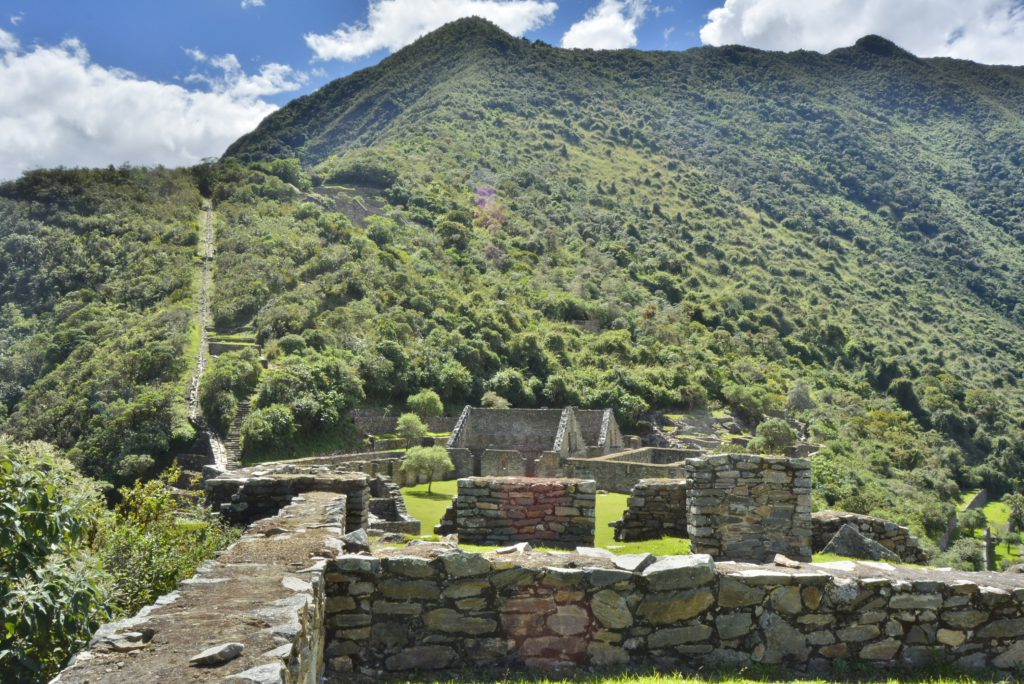
History of Choquequirao
Choquequirao is off the beaten track both literally and metaphorically.
Unlike Machu Picchu, it’s whereabouts and existence has been known for over 300 years.
However, it is only in the past 25 years that the Peru government has started paying attention to it as a cultural and tourist destination.
For this reason, less than 30% of the grounds have been reclaimed from the cloud forest that enveloped it upon its abandonment 500 years ago.
And because so little of the site has been unearthed, and in such a relatively short time period, very little is concretely known about its origins and purpose.
What is known is that Choquequirao had two major growth stages.
This probably indicates that it was founded by the Inca Pachacuti in the 15th century, and remodelled and expanded by his son, Tupac Inca Yupanqui in the 16th century.
Perhaps.
It was one of the last holdouts of the Incan Empire against the Spanish conquistadors, and never actually faced conquest itself.
Instead, one day the occupants simply laid down their tools and abandoned the site to the mountain jungle, slipping away into the mysteries of time.
It was most probably an administrative hub for the Incan Empire, serving multiple civic functions.
It would have been home to administrators, the artisans who built the site and the labourers who worked the remarkable agricultural terraces sculpted into cliff faces.
A lot of space was dedicated to worship of the Sun God, ancestor worship and spiritual matters.
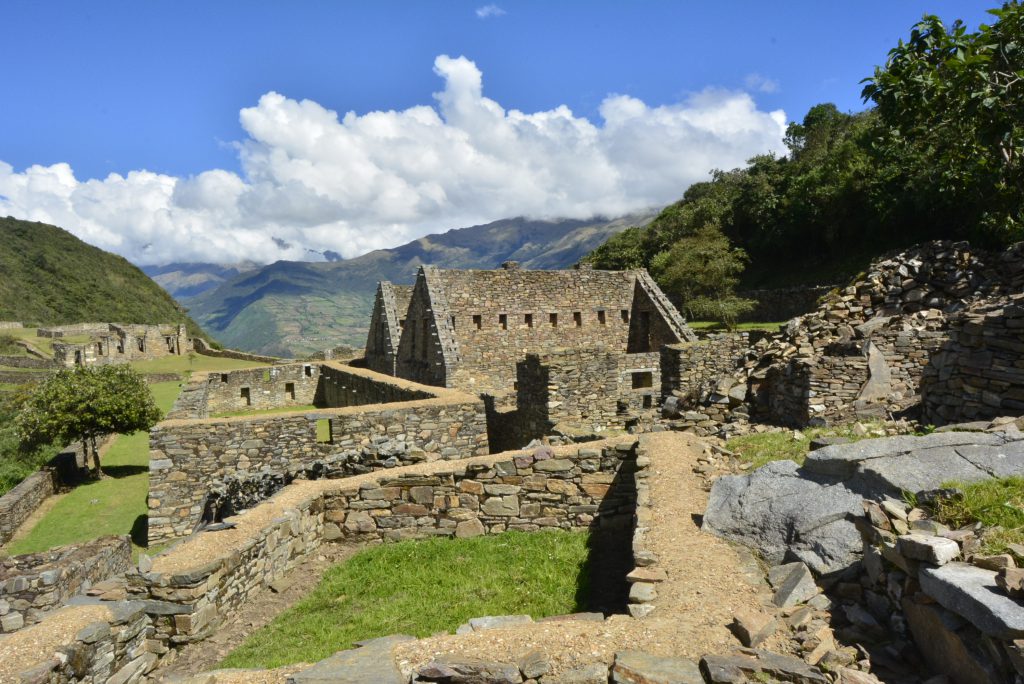
The Trail
It should be noted from the outset that this is a tough trek.
The trail is most commonly done over 4 days, but can be completed in 3 if you are fit and strong and 5 if you want to spend more time at the ruins.
It involves descending 1,500 metres down one side of the Apurimac Valley, crossing the Apurimac River, and ascending 1,800 metres up the other side.
The descent will leave your legs feeling like jelly, and the ascent will leave your heart wondering if this is what cardiac arrest feels like.
Many tours will arrange for your camping equipment to be carried by a mule.
Mules can also be arranged individually at the trailhead town of Cachora or possibly on the trail itself at one of the campsites.
The most common starting point is from the town of Cachora, reached by a 4 hour bus from Cusco.
The descent does not begin for a further three hours, at el Mirador de Capuliyoc, and a taxi can be taken to this point to save on time.
After this it is steep descending through green grassland and arid, rocky desert.
The path never diverges and it is impossible to accidentally get lost.
The knowledge that the return journey will involve climbing back up this steep descent should be put to the back of the mind.
A nominal half-way point is marked by the bridge over the Apurimac river.
From here on, it is all steep ascending.
If a mule is transporting your bags and equipment, you’ll be a happy trekker.
But again, for those with sturdy, Terminator-legs, it can all be done unassisted.
The ruins themselves come in to view well before you reach them and can even provide the illusion that you’ve already made it.
The Campsites
1. Chiquisca – once you begin the descent at el Mirador de Capuliyoc, this will be the first campsite you encounter, after about 2 hours of hiking. It’s a good place to stop for a breather, enjoy running water and refuel. On the way back, it’s the last campsite before the hellish ascent back to el Mirador, so keep that in mind. A common sleeping place for the third night.
2. Playa Rosalinda – for those who begin the hike direct from the town of Cachora, this site on the banks of the River Apurimac is a good place to stop for the night. It’s also the last rest point before the ascent up to Choquequirao. However, for those who start at el Mirador de Capuliyoc, it’s strongly recommended that you fight your way on to the next site, which is called…
3. Santa Rosa – there are two sites here, Santa Rosa Baja and Santa Rosa Alta, about a 30 minute hike between the two. If you can end the first day here, do it. Otherwise, the second day will be a real slog of between 3 – 5 hours of pure climbing.
4. Marampata – a real village before it is a campsite, this is a further 1-2 hour climb from Santa Rosa, and very picturesque. There are decent options for camping and hot food here, and Choquequirao is within sight.
5. Choquequirao – there is a campsite just below the ruins which are ideal for exploring the entire site, which, if done thoroughly, will take a whole day. However, be warned, food and water cannot be bought here and you must provide your own supplies.
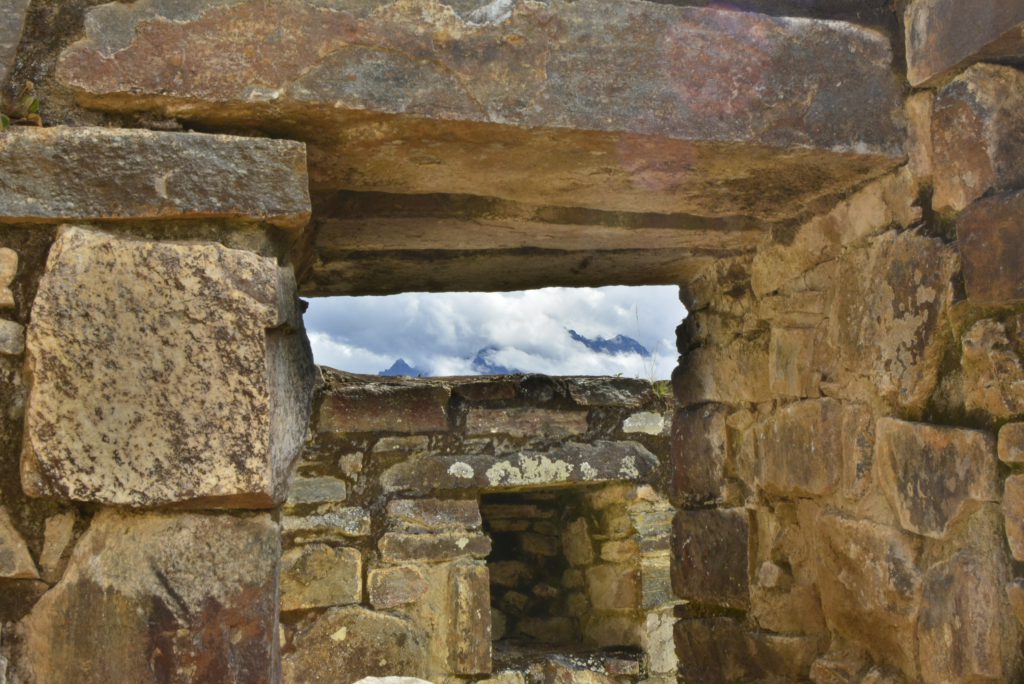
What Choquequirao Trek?
4 Days 3 Nights / 5 Days 4 Nights
This is the most common route.
Trekkers will start in Cachora and hike the first day to Playa Rosalinda.
The second day will be the ascent to Choquequirao, camping over night there.
For the 5 day trek, a whole day will be spent exploring the ruins.
For the 4 day, half a day will be spent exploring, and then the second half will be spent descending back to Chiquisca.
The final day will be the return to Cachora.
9 Days to Machu Picchu
An epic trek that follows the standard trail to Choquequirao on the second day, but then keeps going, passing through Santa Teresa and Aguas Calientes and arriving at Machu Picchu on the final day.
12 Day Choquequirao – Salkantay Trek on the Inca Trail
The big daddy.
This trek incorporates the Choquequirao trek with the Salkantay trek.
The first two days take you to Choquerquirao like normal, and then you trek on to join the Salkantay trail, pass that peak and head on to Machu Picchu.
Unguided Solo
Perfectly do-able with just a modicum of initiative.
Because the trail is so easy to follow, once you get to Cachora the only purpose a guide would serve would be to pitch your tent for you or arrange a mule to carry your gear.
If you are able to rent the gear you need from Cusco and get a bus to Cachora, the rest is straight forward.
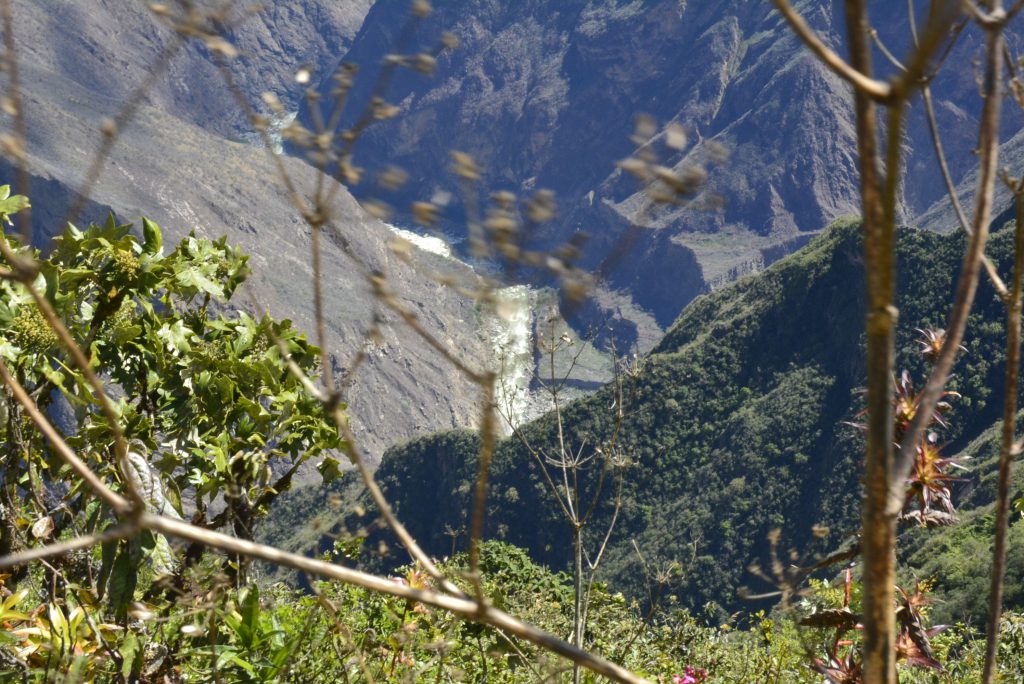
Climate and When to Go on a Choquequirao Trek
The wet season is December to March, when the trail is liable to get bogged down.
But this is still not a deal breaker.
Rain is obviously a complication, but nothing that should put off the trekker hardy enough to take on the Choquequirao trek in the first place.
During the day the sun shine is strong and intense.
At night, at higher altitudes temperatures get chilly.
This disparity of temperatures calls for diligence in packing.
If you find yourself trekking in the midday sun, you will struggle.
And at night, a thin sleeping bag will not suffice.
What to Pack
If going with a tour, much of the following equipment will be supplied for you by your tour operator.
If trekking solo, it’s important to pack very carefully.
Food and water can be purchased at the campsites, but at a premium.
How much you choose to bring is up to you, because you will save money but incur extra weight.
Throughout the entire trek, you will be making the infernal calculation of how much water you want to lug with you against how thirsty you want to be.
It’s advisable to carry between 1 – 2 litres of water for every 3 hours of hard trekking.
This list assumes you are packing entirely for yourself:
- Tent
- Thermal sleeping bag
- Hiking boots
- Walking sticks (very important)
- Jacket
- Shorts and t-shirts for when it’s hot
- Long shirts and trousers for when it’s cold/insects
- Insect repellant (good quality)
- Sunglasses
- Suncream
- Sun hat
- Toilet paper
- Flip flops
- Flashlight / Torch
- A book
- Water
- Snacks
- Chocolate
- Fruit
- Nuts
- Tinned food
- Oatmeal
So if you’ve read this far you are already interested in a Choquequirao trek.
Because you want a challenge and you want to get off the beaten path.
You want to do things differently, you want to do things your own way and you want to see something generally unseen.
A Choquequirao trek is no walk in the park but it’s a challenge to overcome and a reward to savour.
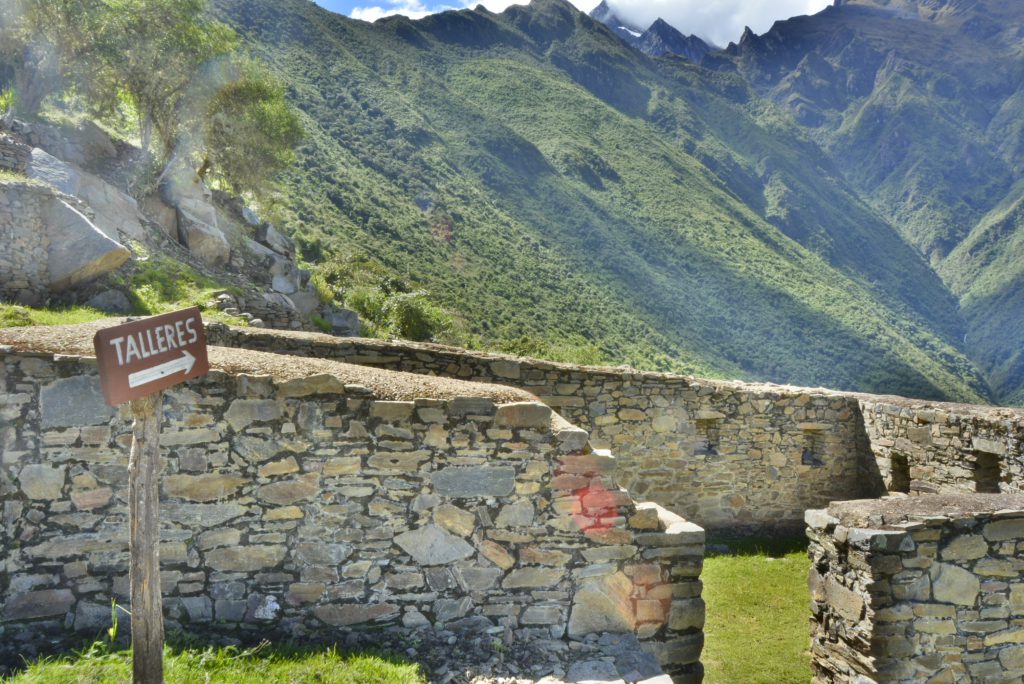
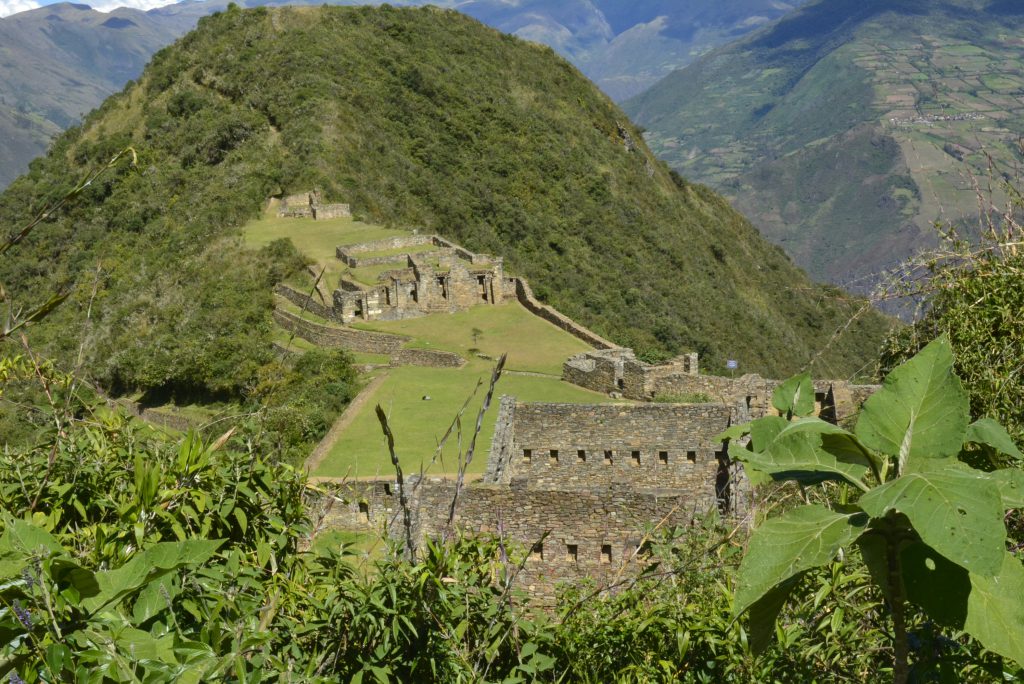
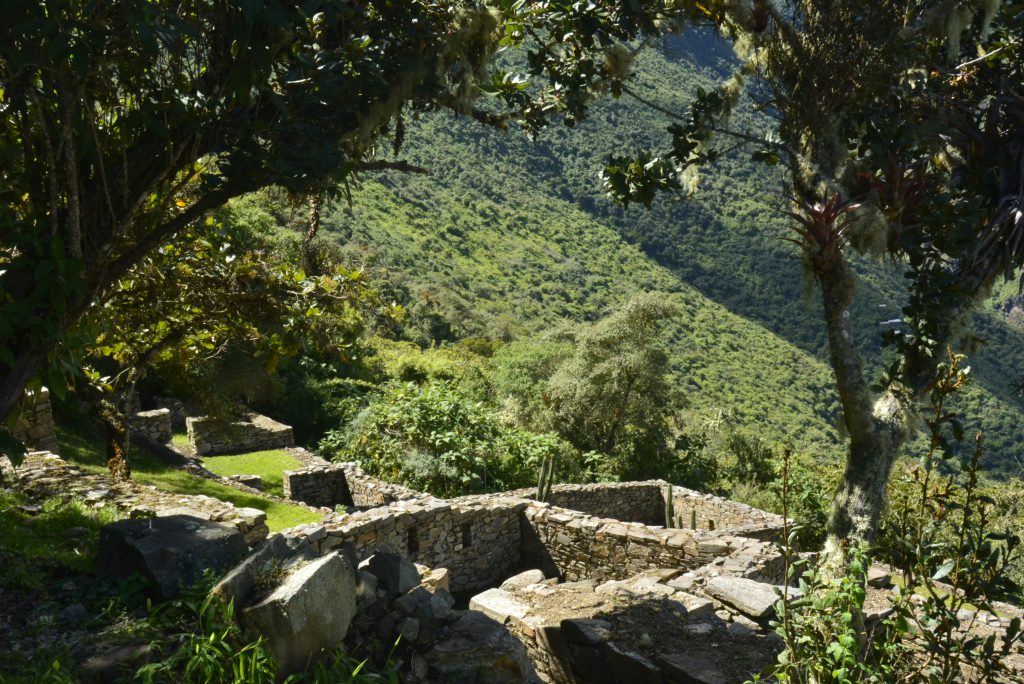
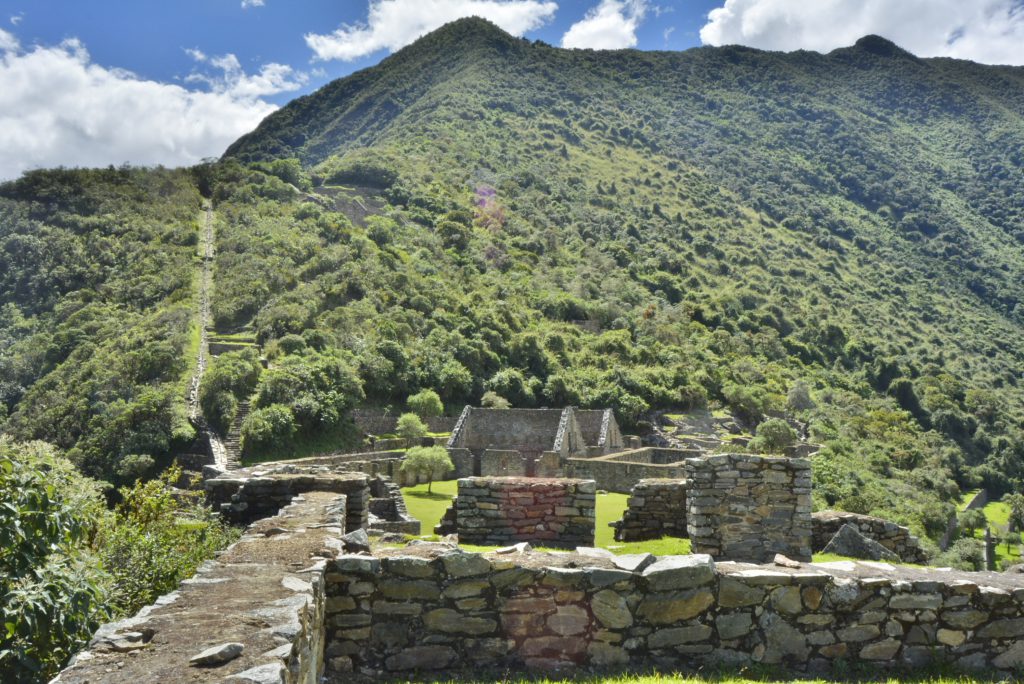
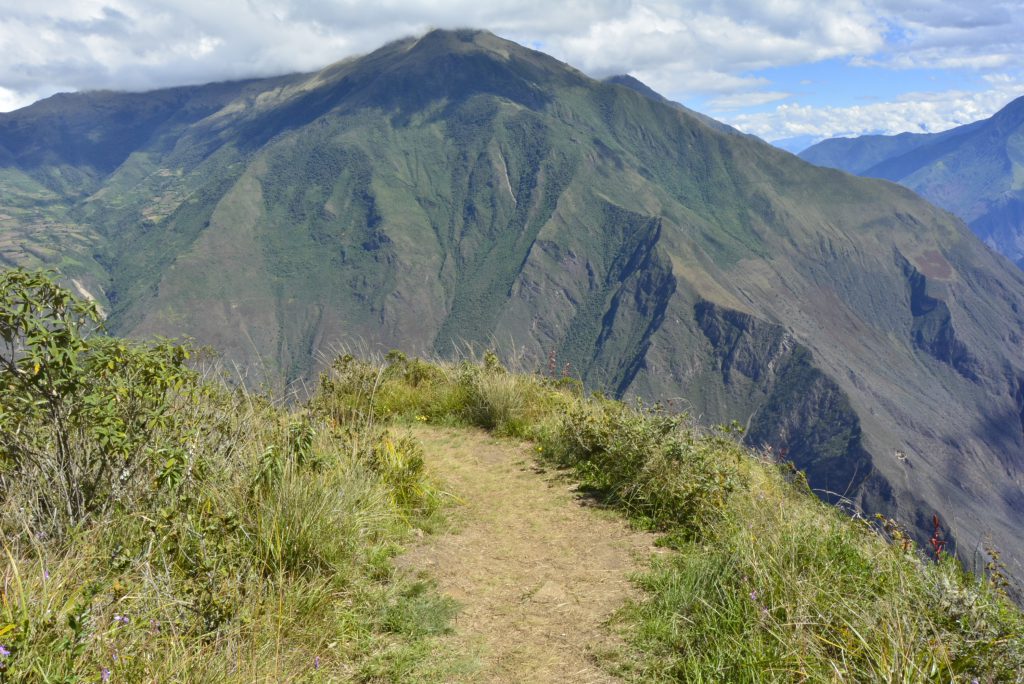
Like this post? Pin it!
